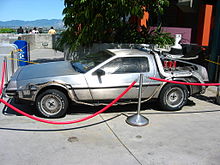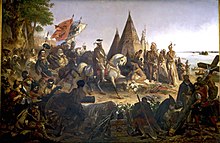The culture was almost the same in the twentieth century as
it was in the nineteenth and eighteenth century in that it was a constant
culture of change. The revolutionary war rebelled against British culture and
established a new American culture, the civil war can be looked at as a
rebellion against the culture of slavery and then the late nineteenth century
brought about the industrial revolutionary.
The twentieth century was no different. As in the past, it
was simply a change in what the labor force produced. We switched from an
agrarian society to a manufacturing society to a technological society. The
titans of industry in the early half of the century were the steel tycoons, the
railroad tycoons and auto manufacturers and it was basically the same thing as
it was now in that there were tons of startups and very few made it.
Just as the early popularization of the automobile allowed
any semi-skilled machinist to start an automobile company. The popularization
of the home computer allowed any semi-skilled programmer to star a dot com.
 We are still allowed to put our ideas out there but we may
not always succeed in business. Preston Tucker and his Tucker Automobile
Company was a prime example of this. “[Tucker’s] Plexiglas rotating gun turret
was a success, and was employed on numerous military aircraft during the war.” [1]
Despite all his successes as an innovator, Tucker’s automobile company was
never able to take off.
We are still allowed to put our ideas out there but we may
not always succeed in business. Preston Tucker and his Tucker Automobile
Company was a prime example of this. “[Tucker’s] Plexiglas rotating gun turret
was a success, and was employed on numerous military aircraft during the war.” [1]
Despite all his successes as an innovator, Tucker’s automobile company was
never able to take off. Then there was John Delorian who had great success at
Packard Motor Company and General Motors. However, his Delorian motor company, much
like Tucker’s, managed to only produce a few pieces of collectable memorabilia.
Then there was John Delorian who had great success at
Packard Motor Company and General Motors. However, his Delorian motor company, much
like Tucker’s, managed to only produce a few pieces of collectable memorabilia.
“At Pontiac,
the key figures were “Bunkie” Knudsen, Petes Estes, and especially Jon Z.
Delorean.” [2]
 In spite of the innovations in the automobiles Tucker and
Delorian produced, they were unable to be successful businessmen like Henry
Ford or Walter Chysler. (Perhaps investors in Tesla Motors should beware.) Ford
and Chysler’s successful counterparts today would be Microsoft’s Bill Gates and
Apple’s Steve Jobs.
In spite of the innovations in the automobiles Tucker and
Delorian produced, they were unable to be successful businessmen like Henry
Ford or Walter Chysler. (Perhaps investors in Tesla Motors should beware.) Ford
and Chysler’s successful counterparts today would be Microsoft’s Bill Gates and
Apple’s Steve Jobs.
You have to have more than just the idea; you’ve got to get
the idea right as in Playing Indian
where certain groups would try to mimic Indian dances and ceremonies. Even
though they had the jest of it, they left the details out. It was like a
skilled pianist playing the piano and then watching a child banging on the
keys. That child understands the basics of what to do in that he knows to sit
on the bench, press the pedals and hit the keys but one cannot be compared to
the other.
 “Many communes toyed with symbolic Indianness; they were in
reality largely disconnected from Indian people… Native communities, often
unexpectedly socially restrictive, did not mesh well with the aggressive
individualism of many communes… most preferred a symbolic life of tipis and
buckskins to lessons that might be hard-won and ideologically distasteful.” [3]
“Many communes toyed with symbolic Indianness; they were in
reality largely disconnected from Indian people… Native communities, often
unexpectedly socially restrictive, did not mesh well with the aggressive
individualism of many communes… most preferred a symbolic life of tipis and
buckskins to lessons that might be hard-won and ideologically distasteful.” [3]
In true form to American culture and willingness to back new
ideas, we’ve continued to spit out epic failures. It’s the few winners that
sustain us.
 In spite of the $375 million Louis Borders’ Webvan.com
[4] raised, it still failed in 2001. Greg McLemore’s Pets.com was another major
failure of the dot com boom. McLemore managed to raise $300 million on a market
that consumers loved to spend their money on. However, much like the child
banging on a piano, the idea was right but the end result left audiences saying,
“Where’s that child’s parents? Get him off the stage.”
In spite of the $375 million Louis Borders’ Webvan.com
[4] raised, it still failed in 2001. Greg McLemore’s Pets.com was another major
failure of the dot com boom. McLemore managed to raise $300 million on a market
that consumers loved to spend their money on. However, much like the child
banging on a piano, the idea was right but the end result left audiences saying,
“Where’s that child’s parents? Get him off the stage.”
The ideas are sound but the devil is in the details, whether
it is in business or Playing Indian.
In short, let’s say the most important component of American
culture during the mid to late twentieth century is the same it’s
always been: the ability to try and the freedom to fail and the chance to
win.
- John Heitmann, The Automobile and American Life (Jefferson: McFarland, 2009), 131
- John Heitmann, The Automobile and American Life (Jefferson: McFarland, 2009), 177
- Philip J. Deloria, Playing Indian, (New Haven: Yale Historical Publications, 1998), 159
- CNET: The Power of 10, Top 10 dot-com flops, www.cnet.com/1990-11136_1-6278387-1.html
